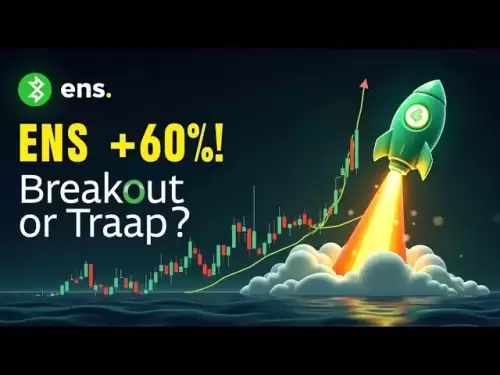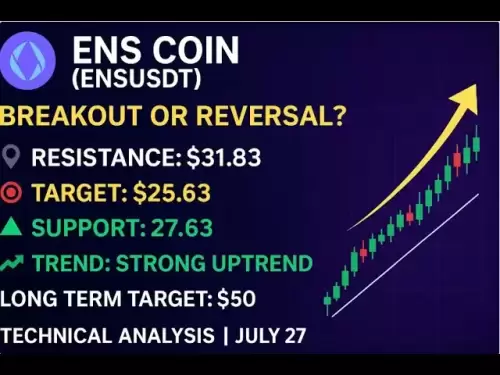-
 Bitcoin
Bitcoin $117900
0.31% -
 Ethereum
Ethereum $3766
0.28% -
 XRP
XRP $3.176
-0.31% -
 Tether USDt
Tether USDt $1.000
0.00% -
 BNB
BNB $795.6
1.51% -
 Solana
Solana $186.8
-1.09% -
 USDC
USDC $0.9999
-0.01% -
 Dogecoin
Dogecoin $0.2353
-1.33% -
 TRON
TRON $0.3226
1.49% -
 Cardano
Cardano $0.8172
-1.08% -
 Sui
Sui $4.178
3.06% -
 Hyperliquid
Hyperliquid $43.05
-3.39% -
 Stellar
Stellar $0.4367
-0.57% -
 Chainlink
Chainlink $18.62
1.47% -
 Hedera
Hedera $0.2828
6.63% -
 Bitcoin Cash
Bitcoin Cash $584.7
5.65% -
 Avalanche
Avalanche $24.81
2.53% -
 Litecoin
Litecoin $112.8
-0.88% -
 UNUS SED LEO
UNUS SED LEO $8.975
-0.08% -
 Shiba Inu
Shiba Inu $0.00001395
-1.07% -
 Toncoin
Toncoin $3.285
-1.05% -
 Ethena USDe
Ethena USDe $1.001
0.01% -
 Polkadot
Polkadot $4.123
0.76% -
 Uniswap
Uniswap $10.49
-0.18% -
 Monero
Monero $326.5
0.14% -
 Dai
Dai $0.9999
-0.02% -
 Bitget Token
Bitget Token $4.576
0.34% -
 Pepe
Pepe $0.00001247
-1.55% -
 Cronos
Cronos $0.1400
3.77% -
 Aave
Aave $295.1
-0.73%
Can Dogecoin continue to be held after liquidation?
Dogecoin liquidation, triggered by leveraged trading losses, forces asset sales to cover debts. Whether to hold Dogecoin afterward depends on individual risk tolerance, investment strategy, and market outlook; a price drop might be a buying opportunity for some.
Feb 28, 2025 at 07:12 pm
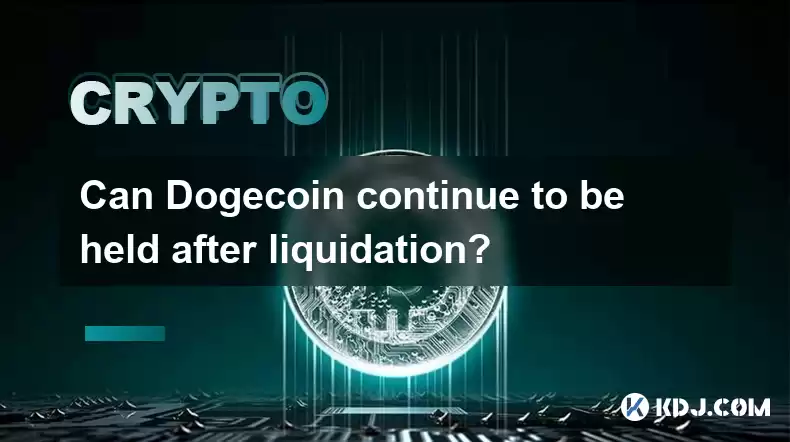
Can Dogecoin Continue to Be Held After Liquidation?
Key Points:
- Understanding Liquidation in Crypto: Liquidation, in the context of crypto, refers to the forced selling of an asset to cover losses on a leveraged position. This happens when the value of the collateral securing a loan drops below a certain threshold, triggering an automatic sale by the lender to recoup their funds. This process isn't unique to Dogecoin; it applies to any cryptocurrency used as collateral. The impact on Dogecoin's price can be significant, particularly if many liquidations occur simultaneously, creating a downward pressure. However, the broader impact depends on the scale of the liquidation event and the overall market sentiment.
- The Role of Leverage and Margin Trading: Liquidations are most commonly associated with leveraged trading. This involves borrowing funds to amplify potential profits (and losses). If you're using Dogecoin as collateral for a leveraged position, a drop in Dogecoin's price can quickly lead to liquidation. The higher the leverage, the smaller the price movement required to trigger liquidation. This highlights the inherent risk of leveraged trading and underscores the importance of risk management. Understanding your risk tolerance and employing appropriate risk mitigation strategies is crucial before engaging in leveraged trading with Dogecoin or any other cryptocurrency.
- Post-Liquidation Dogecoin Holding Strategies: The decision of whether to continue holding Dogecoin after a liquidation event depends on several factors, including your personal investment strategy, risk tolerance, and market outlook. A significant price drop might be a buying opportunity for some long-term investors who believe in Dogecoin's potential. Others might choose to diversify their portfolio or exit the position entirely, depending on their financial goals and risk appetite. There's no one-size-fits-all answer, and the decision should be based on a thorough analysis of your individual circumstances.
- Market Sentiment and External Factors: The impact of a Dogecoin liquidation on the broader market and your individual holdings depends heavily on the prevailing market sentiment and external factors. A large-scale liquidation could exacerbate existing bearish sentiment, leading to further price declines. Conversely, if the market is bullish, the impact might be less severe. External factors such as regulatory changes, technological advancements, or macroeconomic events can also influence Dogecoin's price and the overall cryptocurrency market. Staying informed about these factors is crucial for making informed investment decisions.
- Understanding Liquidation in Crypto (Detailed):
Liquidation in the cryptocurrency market is a crucial mechanism designed to protect lenders from losses associated with leveraged trading. Imagine you borrow funds to buy Dogecoin, hoping its price will increase. The lender requires collateral – your Dogecoin – to secure the loan. This collateral acts as insurance against your potential inability to repay the loan. If Dogecoin's price falls significantly, the value of your collateral decreases. When the value of the collateral drops below a predetermined threshold (the liquidation price), the lender automatically sells a portion or all of your Dogecoin to cover the loan. This forced selling is the liquidation.
The liquidation process is typically automated to minimize losses for the lender. The liquidation price is usually set below the loan-to-value (LTV) ratio, providing a buffer to account for price volatility. The speed and efficiency of the liquidation process vary depending on the exchange or lending platform. Some platforms employ sophisticated algorithms to manage liquidations and minimize market impact, while others might experience delays or inefficiencies. Understanding the specific liquidation parameters of your chosen platform is essential for managing risk effectively. The frequency and scale of liquidations can also influence the overall market sentiment and price stability of Dogecoin. A sudden surge in liquidations can create a sell-off, exacerbating price declines and potentially impacting other cryptocurrencies.
- The Role of Leverage and Margin Trading (Detailed):
Leverage in cryptocurrency trading allows you to amplify your trading positions, potentially multiplying both your profits and your losses. For instance, a 5x leverage means you can control five times the value of Dogecoin with your initial capital. While this can lead to substantial gains if the price moves in your favor, it significantly increases the risk of liquidation. Even a small price movement against your position can quickly wipe out your initial investment and trigger liquidation.
Margin trading is a common way to utilize leverage. In margin trading, you borrow funds from an exchange to increase your buying power. The borrowed funds, along with your own capital, are used to purchase Dogecoin. The exchange holds your Dogecoin as collateral to secure the loan. The risk of liquidation increases with higher leverage levels. A 10x leverage position requires only a 10% drop in Dogecoin's price to trigger liquidation, while a 2x leverage position would require a 50% drop.
Proper risk management is paramount when engaging in leveraged trading. This includes understanding your risk tolerance, setting stop-loss orders to limit potential losses, and diversifying your portfolio. It's also crucial to choose a reputable exchange with transparent liquidation policies and a robust trading platform. Failure to manage risk effectively can lead to significant financial losses and even the complete loss of your initial investment. Never invest more than you can afford to lose, and always conduct thorough research before engaging in leveraged trading.
- Post-Liquidation Dogecoin Holding Strategies (Detailed):
After a liquidation event, whether you choose to continue holding Dogecoin is a personal decision that depends heavily on your individual circumstances and investment goals. Several factors need careful consideration. First, evaluate your risk tolerance. If the liquidation resulted in significant losses and you're uncomfortable with further risk, selling your remaining Dogecoin might be the most prudent approach. Conversely, if you have a long-term outlook and believe in Dogecoin's potential, the price drop might represent a buying opportunity.
Consider your investment strategy. If you're a long-term investor, the short-term price fluctuations might not significantly impact your overall portfolio. You might choose to hold onto your Dogecoin, even after a liquidation, and ride out the volatility. However, if you're a short-term trader, you might prefer to exit the position and re-allocate your funds elsewhere. Analyze the reasons behind the liquidation. Was it due to a temporary market correction, or are there underlying issues affecting Dogecoin's price? Understanding the root cause can help you determine whether to hold or sell.
Assess the broader market conditions. If the cryptocurrency market is experiencing a general downturn, it might be wise to wait for a more favorable market environment before making further investment decisions. On the other hand, if the market is recovering, the liquidation might be an isolated event, and holding onto your Dogecoin could prove beneficial. It's essential to conduct thorough research and stay informed about market trends and news before making any decisions. Consider consulting with a financial advisor for personalized guidance.
- Market Sentiment and External Factors (Detailed):
Market sentiment plays a crucial role in influencing Dogecoin's price and the impact of liquidation events. If the overall market is bullish, the impact of a liquidation might be minimal, as other investors are likely to buy the dip. However, if the market is bearish, a liquidation can exacerbate the downward pressure, leading to further price declines. Analyzing market sentiment through various indicators, such as social media sentiment, trading volume, and price charts, can provide valuable insights.
External factors, such as regulatory changes, technological advancements, and macroeconomic conditions, can also significantly influence Dogecoin's price. Government regulations on cryptocurrencies can affect investor confidence and trading activity. Technological advancements, such as new developments in blockchain technology, can impact Dogecoin's functionality and appeal. Macroeconomic events, such as inflation or recession, can also influence investor behavior and affect the overall cryptocurrency market. Staying informed about these factors is essential for making informed investment decisions.
Monitoring news sources, analyzing market data, and understanding the underlying factors affecting Dogecoin's price can help you navigate the volatility and make well-informed decisions. Remember that the cryptocurrency market is highly volatile, and no one can predict the future with certainty. Diversification is key to managing risk, and it's crucial to never invest more than you can afford to lose. Consider the impact of global events, such as geopolitical instability or major economic announcements, on market sentiment and Dogecoin's price. These factors can cause significant price swings and influence liquidation events.
FAQs:
Q: What happens to my Dogecoin after liquidation?
A: In a liquidation event, the exchange or lending platform will automatically sell a portion or all of your Dogecoin to cover your loan. The exact amount sold depends on the loan-to-value ratio, the price of Dogecoin at the time of liquidation, and the platform's specific policies. You will likely receive the remaining Dogecoin (if any) after the loan is settled.
Q: Can I prevent liquidation?
A: While you cannot completely prevent liquidation, you can minimize the risk by carefully managing your leverage, setting stop-loss orders to limit potential losses, and monitoring your positions closely. Avoid excessively high leverage ratios and diversify your portfolio to reduce your exposure to any single cryptocurrency. Regularly check the health of your positions and adjust your strategy as needed to maintain sufficient collateral.
Q: Is it always a bad idea to hold Dogecoin after a liquidation?
A: Not necessarily. The decision to hold or sell Dogecoin after a liquidation depends on your individual investment strategy, risk tolerance, and market outlook. A significant price drop might present a buying opportunity for long-term investors who believe in Dogecoin's potential. However, it's crucial to conduct thorough research and assess the underlying factors that caused the liquidation before making any decisions.
Q: What are the risks of holding Dogecoin after liquidation?
A: The primary risk is further price decline. If the market sentiment remains bearish or if there are underlying issues affecting Dogecoin's price, the price could continue to fall, potentially leading to further losses. Other risks include regulatory uncertainty, technological challenges, and the inherent volatility of the cryptocurrency market.
Q: How can I learn more about managing risk in cryptocurrency trading?
A: There are many resources available to help you learn about managing risk in cryptocurrency trading, including online courses, educational websites, and books. Many exchanges also offer educational materials and tools to help you understand leverage, margin trading, and risk management strategies. Consulting with a financial advisor can also provide valuable insights and personalized guidance.
Disclaimer:info@kdj.com
The information provided is not trading advice. kdj.com does not assume any responsibility for any investments made based on the information provided in this article. Cryptocurrencies are highly volatile and it is highly recommended that you invest with caution after thorough research!
If you believe that the content used on this website infringes your copyright, please contact us immediately (info@kdj.com) and we will delete it promptly.
- Bitcoin, Ruvi AI, and CoinMarketCap: Navigating the Future of Crypto
- 2025-07-28 02:30:12
- Dogwifhat (WIF) Eyes Bullish Breakout: Can It Breach $1.20?
- 2025-07-28 02:50:12
- Bitcoin Bounces: How the US-China Tariff Truce Impacts Crypto
- 2025-07-28 02:50:12
- Bitcoin Bull Market: Price Targets and Expert Takes
- 2025-07-28 02:30:12
- Cardano Price Rockets: ADA Jumps Past Resistance, $2 Target in Sight?
- 2025-07-28 01:30:14
- Ruvi AI: The Next Solana? Riding the AI Token Wave on CoinMarketCap
- 2025-07-28 00:50:16
Related knowledge
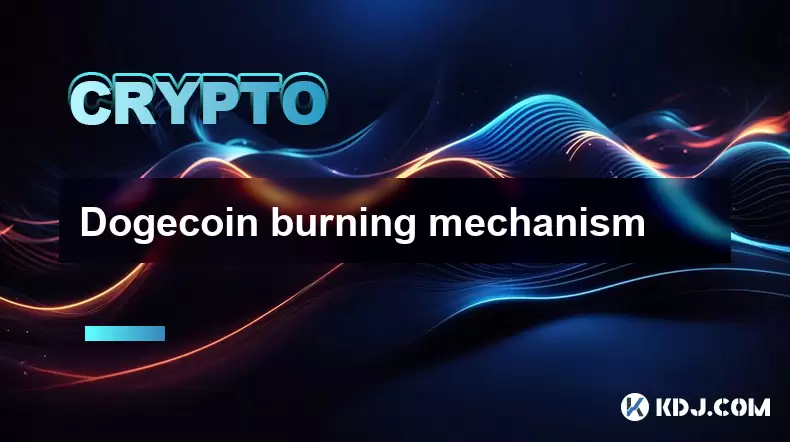
Bitcoincoin burning mechanism
Jul 20,2025 at 09:21pm
What is the Dogecoin burning mechanism?The Dogecoin burning mechanism refers to the process of permanently removing DOGE tokens from circulation by se...
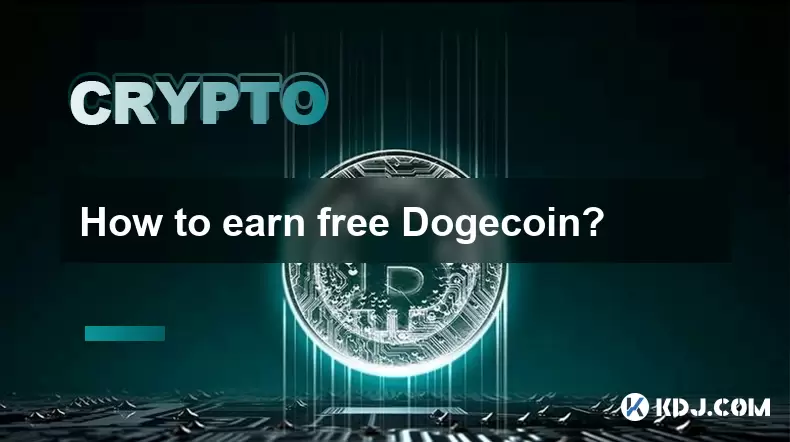
How to earn free Bitcoincoin?
Jul 19,2025 at 10:08pm
What is Dogecoin and Why Earn It?Dogecoin (DOGE) started as a meme-based cryptocurrency in 2013 but has grown into a widely recognized digital asset. ...

Is Coinbase a good wallet for Bitcoincoin?
Jul 19,2025 at 04:42pm
Understanding Coinbase as a Wallet Option for DogecoinWhen considering where to store Dogecoin, Coinbase is often mentioned as a potential option due ...

How to buy Bitcoincoin with PayPal?
Jul 23,2025 at 06:57am
Understanding the Basics of Buying DogecoinBefore diving into the process of buying Dogecoin with PayPal, it’s essential to understand what Dogecoin i...
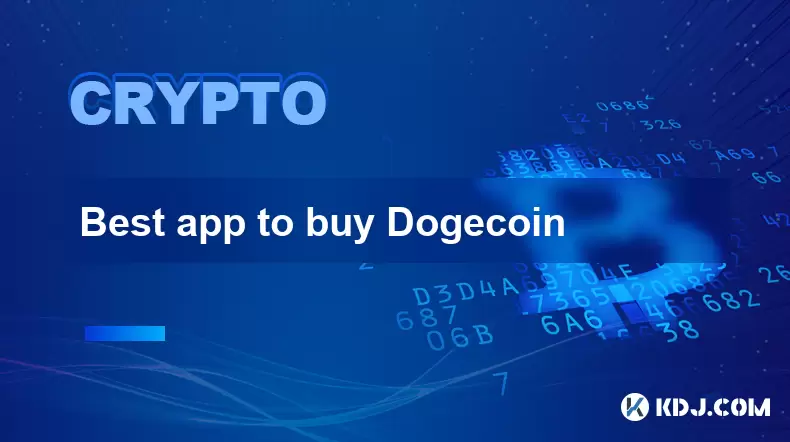
Best app to buy Dogecoin
Jul 23,2025 at 03:08pm
What Is a Cryptocurrency Exchange and How Does It Work?A cryptocurrency exchange is a digital marketplace where users can buy, sell, or trade cryptocu...
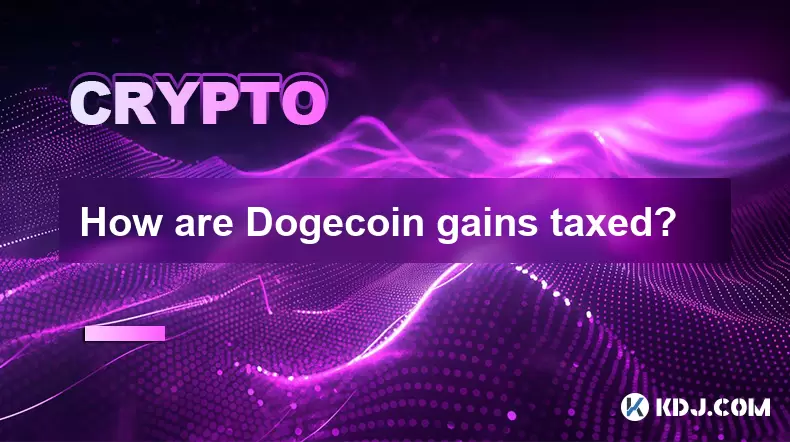
How are Dogecoin gains taxed?
Jul 25,2025 at 07:01am
Understanding the Taxation of Dogecoin GainsWhen it comes to Dogecoin (DOGE), many investors are drawn to its meme-inspired branding and volatile pric...

Bitcoincoin burning mechanism
Jul 20,2025 at 09:21pm
What is the Dogecoin burning mechanism?The Dogecoin burning mechanism refers to the process of permanently removing DOGE tokens from circulation by se...

How to earn free Bitcoincoin?
Jul 19,2025 at 10:08pm
What is Dogecoin and Why Earn It?Dogecoin (DOGE) started as a meme-based cryptocurrency in 2013 but has grown into a widely recognized digital asset. ...

Is Coinbase a good wallet for Bitcoincoin?
Jul 19,2025 at 04:42pm
Understanding Coinbase as a Wallet Option for DogecoinWhen considering where to store Dogecoin, Coinbase is often mentioned as a potential option due ...

How to buy Bitcoincoin with PayPal?
Jul 23,2025 at 06:57am
Understanding the Basics of Buying DogecoinBefore diving into the process of buying Dogecoin with PayPal, it’s essential to understand what Dogecoin i...

Best app to buy Dogecoin
Jul 23,2025 at 03:08pm
What Is a Cryptocurrency Exchange and How Does It Work?A cryptocurrency exchange is a digital marketplace where users can buy, sell, or trade cryptocu...

How are Dogecoin gains taxed?
Jul 25,2025 at 07:01am
Understanding the Taxation of Dogecoin GainsWhen it comes to Dogecoin (DOGE), many investors are drawn to its meme-inspired branding and volatile pric...
See all articles





















